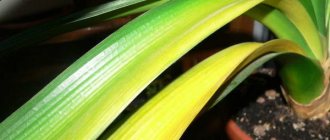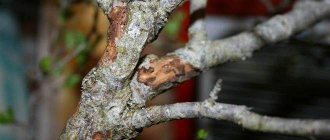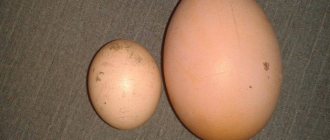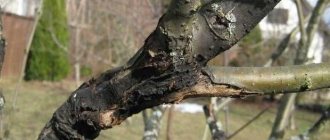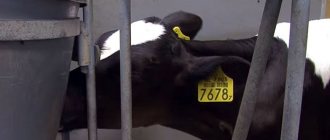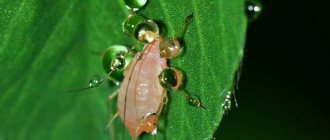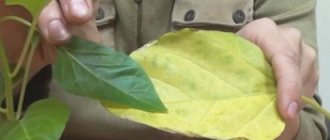Author: Natalya Category: Plant Diseases Published: May 11, 2017Republished: February 12, 2019Last edits: July 21, 2020
For gardeners, the season begins in February-March with sowing vegetable seeds for seedlings. It is at this time that the future harvest of eggplants, peppers, tomatoes, cabbage and cucumbers is laid. And, it would seem, if you have high-quality seed material and many years of experience, you can eliminate all possible risks. However, even if the sowing goes well and the emerging seedlings begin to develop quickly, an experienced owner does not lose vigilance, because the seedlings may be in wait for a black leg.
Blackleg
It has been noted that plants become infected with this disease during the growing season. Tomatoes, peppers, cucumbers, eggplants and other crops can suffer from blackleg.
What kind of disease is this
Blackleg is not a specific disease. Diseases can be caused by various fungal or viral bacteria.
It is known that the top layer of soil is a fertile environment for olpidium, pythium and rhizoctonia - fungi, which feed on dead tissue. These fungi also attack young shoots. Plants wither, stems dry out and turn black. The stem of a diseased plant becomes thin at its base and cannot support the weight of the sprout. The root rots.
Causes of blackleg
There are several blackleg lesions.
Most often, fungal diseases are caused by poor-quality soil. For example, the soil was waiting in the wings, lying in a sealed bag, and at that time fungi and mold appeared in the soil, which the gardener did not notice. Again, poor quality soil can cause bacterial disease. This disease is caused by bacteria found in the soil, mainly in the upper layer. But a viral disease often results from the use of low-quality, diseased seeds. A priori, healthy plants cannot grow from such seed material.
Infection of seedlings with blackleg is also affected by errors when growing plants:
- The soil is not suitable for the plant.
- Tolerance for condensation of sprouts.
- Strong humidity plus high room temperature.
- Poor ventilation in the room.
- The temperature regime is not equalized.
- Proper watering is disrupted, the water temperature is colder than the seedlings require.
What does a black leg look like on tomatoes?
If the seedlings are sick, the appearance changes:
- Weak stem, tapering towards the base.
- Discoloration at the base of the stem. At first there are brown “speckles”, then the neck turns black.
- The leaves begin to curl and dry out.
- The color of the leaves becomes darker.
- The sprouts tend to the ground.
- Plants break off at the base.
Tomato stems are stretching: what to do
What to do and how to deal with blackleg at home
If the sprouts become sick, you need to take immediate action:
- Blocking the hearth. Ash and sand are poured into the soil. This will neutralize acidity and reduce moisture.
- Strengthen the plant's immunity. To do this, use dolomite flour, which is poured into the soil.
- Use soda solution. A teaspoon of soda is dissolved in a glass of water, and the plant is subjected to a soda shower. This is a temporary measure; it is impossible to cure seedlings in this way.
- To cure a fungal disease, you need a solution of copper sulfate or manganese, or Bordeaux mixture. Colloidal sulfur can also be used.
- Bacterial diseases can be treated with colloidal sulfur.
- It is necessary to treat with biological products. This could be “Gamaira”, “Fitosporin” and others.
How to grow tomatoes at home
Causes of disease in tomatoes
The causes of infection are contaminated soil and seeds. Further development of blackleg is facilitated by gross violations of tomato agricultural technology:
- sowing seeds in non-disinfected containers and soil mixtures;
- no seed treatment;
- high acidity, compaction of the substrate;
- thickening of plantings, lack of picking;
- sudden changes in air temperature;
- increased soil moisture;
- low temperature combined with high air humidity;
- poor lighting, lack of ventilation;
- excess nitrogen in the soil.
Infection of plants accelerates damage to roots by germ fly larvae.
The author of the video shows tomato seedlings that are affected by bacteria and protozoan fungi.
How to protect seedlings from disease
To protect plants from blackleg, comprehensive measures are used. It is necessary to disinfect the container where the plant will be located. Seeds must be treated with fungicides. Water wisely to avoid creating a fertile environment for the formation of mold and fungi. The soil should not be allowed to become sour; prevention would be the use of agrovermiculite. Seedlings must be fed with preparations that support their health and root system.
You also need to use only high-quality soil; already prepared compounds, which can be purchased at a specialized store, are better suited. Of course, the manufacturer must inspire trust. Seedlings should grow freely, without crowding, so they need to be thinned and planted in time. You will also need stimulants, such as Epin, Zircon and others, which will strengthen the plant. If the soil is acidic, the acidity can be neutralized using ash, and preventive soil treatment is carried out using biological products.
Folk remedies for blackleg
Experienced gardeners, saving seedlings from blackleg, use proven preparations and means:
- Ash plus copper sulfate. Take a teaspoon of vitriol per glass of ash. It is necessary to sprinkle the mixture on the soil at the base of the sprout.
- Infusion of onion peel. For half a kilo of husk, take a couple of glasses of water. Warm water is poured over the raw materials and left for a day. The plant is sprayed with the strained solution. You also need to treat the top layer of soil with onion infusion.
- Potassium permanganate solution. A light solution is used. They treat both the soil and seedlings.
- If the disease has affected a sprout, it must be removed immediately, and along with it those sprouts that are around the diseased one. They remove it together with the earthen clod. The affected area is watered with a manganese solution.
- Prepare a solution with vodka (1 part vodka, 10 parts water) and treat the soil. Seedlings also take a vodka shower.
- The eggshells are crushed and added to the soil.
- A solution of baking soda (5 grams of soda per liter of water) is used for watering.
How to feed seedlings
Fungicide treatment
To combat the disease, biofungicides can be used. For example, “Fitosporin-M”. Such drugs as Trichodermin, Gaupsin BT, Planriz and others are effective.
“Fitosporin” is diluted 5 grams per 10 liters of water, then processed. If you use Planriz, then take 50 ml of product per 10 liters of water. The lesion is treated with this solution. “Fitolavina” for 10 liters of water will need 20 ml.
However, fungicide treatment alone is not enough; there must be an integrated approach to treatment.
Fitosporin: how to use and why
Inedible and poisonous mushrooms
Collecting mushrooms and eating them, even in small quantities, is a vital issue, since mushroom poisoning leads to harmful consequences, and sometimes to death.
Inedible mushrooms include:
- pale grebe;
- red fly agaric;
- satanic mushroom.
- Stropharia blue-green;
- Paneolus Campanulata;
- Gebeloma;
- Petition Changeable;
- Fly Agaric Panther;
- orange Gossamer;
- The stitch is ordinary;
- Trametes multi-colored.
Poisonous mushrooms include:
- poisonous row with a gray cap;
- pale grebe;
- spring fly agaric;
- Galerina bordered;
- Sulfur-yellow honey fungus;
- yellow-skinned champignon;
- Lepiota is brown-red.
Prevention from blackleg
To prevent serious disease in seedlings, a number of requirements must be met. Properly prepare the soil and properly treat the seeds before planting.
Also required:
- Use peat or plastic cups for seedlings. In practice, it has been proven that in this container the black leg infects plants much less often.
- The top layer of soil, near the stem, should contain ash.
- Avoid overgrowth, thin out in time.
- Water with the required amount of water, as well as an infusion of onion peels.
- Feed with fertilizers, but under no circumstances add sawdust, they may contain fungal pores.
- Carry out a pick.
- Create a temperature regime in the room that is favorable for plants. The ideal temperature is 22 degrees Celsius.
- There should be no drafts in the room, but a stuffy atmosphere is not welcome either.
- Light should not be in short supply. If there is not enough light, you need to turn on the phytolamp.
Which phytolamp is best for seedlings
How to prepare soil for seedlings
Before planting seeds, the soil must be treated to prevent bacteria and fungi that cause blackleg from remaining in the soil.
The soil is disinfected as follows:
- Freeze in the cold by placing boxes or bags of soil in the frost for all winter months.
- In spring, this soil is placed on a baking sheet in the oven and calcined. The temperature should be 180 degrees.
After these procedures, the soil can be used, but first check its acidity. It is known that acidic soil more strongly provokes the development of disease, so neutralizing acidity is one of the main requirements for growing healthy seedlings. Colloidal sulfur is mixed into the soil at the rate of 5 grams per square meter. Next comes spilling the soil with a solution of potassium permanganate. It is prepared like this: dissolve five grams of manganese in ten liters of water.
How to prepare soil at home
How to properly treat seeds before planting
Seed material must be treated with a solution of potassium permanganate. Disinfection lasts half an hour, then the seeds need to be washed and dried. The solution used is pink; too concentrated a solution will burn the seeds.
You can use stimulants that will give plants immunity. Boric acid, Zircon, Agata are suitable. A good option is “Epin”. Experienced gardeners place the seeds in a solution of this drug, leave it overnight, and only then begin planting.
But the most important thing is
so that the seedlings do not “sit” longer than expected in temporary containers. Planting should be done at the time recommended by gardening guides and experts. Otherwise, it will drag on, wither, and become defenseless against pathogens.
Diagnosis of the lesion
When tubers are infected, tubers are usually infected during storage or when infected during the growth period; at the initial stage, small brown spots form on the skin, which later turn black and increase in size. At this point, the peel becomes especially thin and cracks easily; liquid, rotten juice containing bacteria comes out through the cracks.
Rot not only affects the surface of the root crop. The black leg of the potato penetrates deep into the fruit. Often in photos of cut, affected tubers you can see how rot, like a dagger, strikes the fruit from the peel to the center.
The danger of Erwinia carotovora lies in the fact that it is actively carried by insects, crawling or flying from bush to bush. Thus, slugs or Colorado potato beetles can spread bacteria over a considerable distance, thereby increasing the affected area.
Potato tuber affected by black leg
Advice from gardeners
Blackleg is an insidious disease; one plant can infect others.
Therefore, experienced gardeners recommend:
- If half of the seedlings are affected, you need to destroy all of them. There is no guarantee that the remaining shoots will grow. Mature plants from this batch will not give a good harvest.
- Soil from the manufacturer, purchased in a specialized store, guarantees that it is of high quality and does not contain fungi or harmful bacteria.
- Only growth monitoring will reveal signs of the disease. From the first days of sprouts appearing, you need to carefully examine them.
- It is forbidden to water with cold water. Cold water is one of the causes of plant diseases.
- Fertilizers should be given to plants in moderation. Too much also leads to seedling disease.
In order for the seedlings to grow healthy, the gardener will have to spend a lot of time and effort creating all the necessary conditions for the sprouts: choosing the right soil, organizing timely watering and fertilizing with fertilizers, placing the plants in a room that is comfortable for them. Only this approach will protect seedlings from diseases, including blackleg.
Health to you and your loved ones! Natalya Belokopytova.
Symptoms of manifestation
Most often, attention is paid to infected bushes with blackleg when the external signs become especially obvious. The disease begins to manifest itself with damage to the foliage - it becomes lethargic, covered with brown spots, sometimes with through perforation of the leaf plate. After 2-3 days, the leaves begin to curl and dry out. The basal part of the shoots begins to turn black, the blackening spreads from bottom to top. The shoots become soft and green mucus appears on the surface, later turning black with a characteristic unpleasant odor. The stems are easily separated from the bush, and if you pull the top, the shoot is completely torn out, even with the root part, which usually has no small roots except the central root.
When harvesting, pay attention to tubers with black or dark brown spots, mechanical damage, unusually soft and containing a large amount of liquid.
On potato seed, black leg appears in the form of blackened skin on the entire tuber or individual, large black spots.
Potato stem affected by black leg

